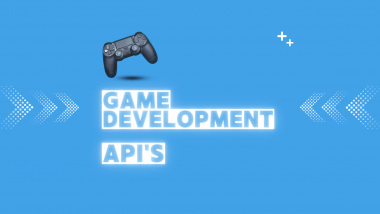Selling digital goods without a subscription model can be an effective way to generate revenue while maintaining flexibility in your business. Fungies.io offers an intuitive platform that simplifies the process of setting up an online store for digital products. This guide will walk you through each step of the process, from choosing your products to launching your store.
Step 1: Define Your Digital Product Offering
Before diving into the setup process, it’s essential to determine what digital goods you want to sell. Consider the following types of products:
- Digital Downloads: These could include software, eBooks, music, or digital art.
- Game Keys: If you’re in the gaming industry, selling Steam, Epic Games, or other platform keys can be lucrative.
- In-Game Items: Offer exclusive in-game assets or bundles for players.
Research Market Demand
Conduct market research to identify which products are in demand. Look for gaps in the market where you can provide unique offerings.
Step 2: Sign Up for Fungies.io
Creating your store on Fungies.io is straightforward. Follow these steps:
- Visit the Fungies.io website and click on the “Get Started” button.
- Create an account by providing your email address and setting a password.
- Access the dashboard where you will manage your store.
Step 3: Customize Your Store
Fungies.io provides a no-code website builder, making customization easy. Here’s how to tailor your store:
- Choose a Template: Select from various templates designed specifically for digital goods.
- Add Branding Elements: Upload your logo, choose color schemes, and set up banners that reflect your brand identity.
- Organize Your Products: Create categories for your products, such as “Game Keys,” “Digital Art,” or “Software,” to enhance navigation.
Step 4: Upload Your Digital Products
Once your store is visually appealing, it’s time to add your products:
- Select the “Add Product” option in your dashboard.
- Fill in Product Details: Include the product name, description, main image, and any other relevant information.
- Upload Game Keys or Digital Files: If you’re selling game keys, ensure you have the necessary licenses to distribute them. Fungies.io allows you to upload Steam keys and other platform keys directly.
- Set Pricing: Determine a competitive price for your products based on market research and perceived value.
Step 5: Set Up Payment Processing
Fungies.io simplifies payment processing by offering over 250 payment methods. Here’s how to set it up:
- Navigate to Payment Settings: Choose your preferred payment methods, such as credit cards, bank transfers, or Buy Now Pay Later options.
- Understand Transaction Fees: Fungies.io charges a small fee per transaction (5% + $0.50), which is significantly lower than many other platforms.
- Handle Taxes Automatically: Fungies.io acts as the Merchant of Record, managing tax collection and reporting for you.
Step 6: Optimize Your Store for User Experience
Creating a seamless shopping experience is vital for converting visitors into customers. Focus on:
- Intuitive Navigation: Ensure your store is easy to navigate with a clear menu structure and product categories.
- Effective Search Functionality: Implement a robust search feature that allows customers to find products quickly.
- High-Quality Product Images: Use clear, high-resolution images and detailed descriptions to showcase your products.
Step 7: Launch Your Store
Once everything is set up and optimized, it’s time to launch:
- Preview Your Store: Before going live, preview your store to ensure everything looks and functions as intended.
- Publish Your Store: Go to the settings and publish your store. If you have your own domain, configure the DNS settings to link it with your Fungies.io store.
- Test the Purchase Process: Conduct a test transaction to ensure the payment process works smoothly.
Step 8: Promote Your Digital Goods
With your store live, focus on marketing your products:
- Social Media Marketing: Use platforms like Instagram, Facebook, and Twitter to promote your products and engage with your audience.
- Email Marketing: Build an email list and send newsletters featuring new products, discounts, and promotions.
- Content Marketing: Create valuable content related to your products, such as blog posts or videos, to attract potential customers.
Step 9: Provide Excellent Customer Support
Customer support is crucial for retaining customers and building trust:
- Responsive Communication: Address customer inquiries promptly and provide clear, helpful responses.
- Troubleshooting Assistance: Offer support for any issues customers may encounter with their purchases.
- Flexible Refund Policies: Implement a fair refund policy to reassure customers about their purchases.
Step 10: Continuously Improve Your Offerings
To stay competitive, continually assess and improve your product offerings:
- Gather Customer Feedback: Regularly solicit feedback from customers to identify areas for improvement.
- Update Products: Keep your product offerings fresh by adding new items or updating existing ones based on market trends.
- Monitor Sales Data: Analyze sales data to understand which products perform best and adjust your strategy accordingly.
Conclusion
Selling digital goods without a subscription model is entirely feasible with the right approach. Fungies.io provides a user-friendly platform that allows you to set up your store quickly and efficiently. By following this step-by-step guide, you can successfully launch your digital goods store, attract customers, and drive sales. Focus on providing high-quality products, excellent customer service, and effective marketing strategies to ensure your success in the digital marketplace.






